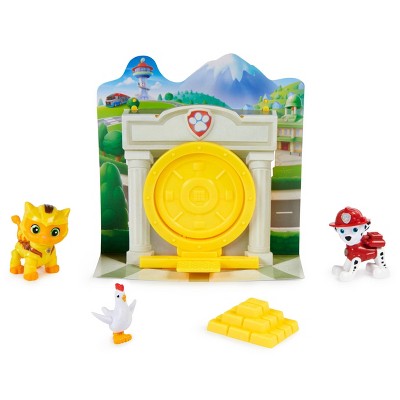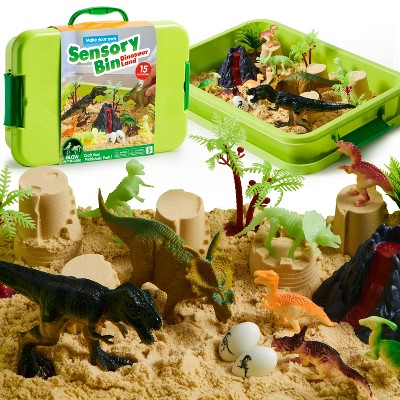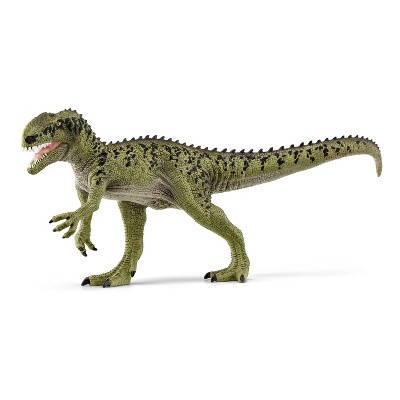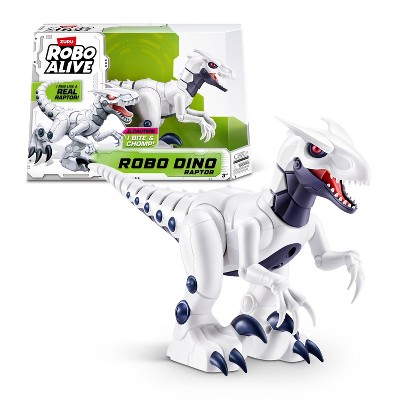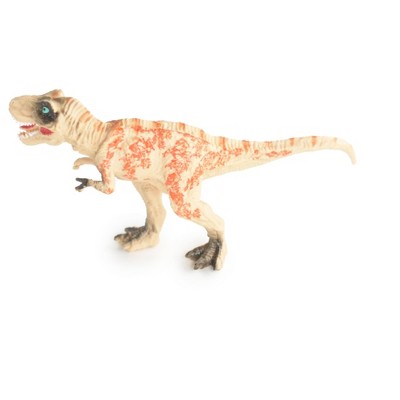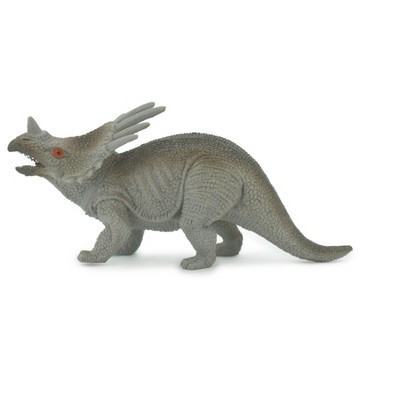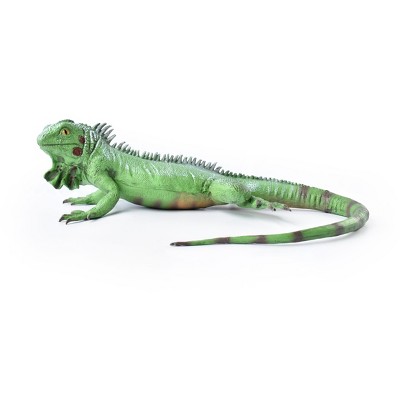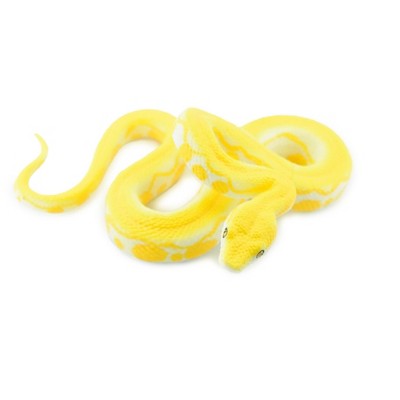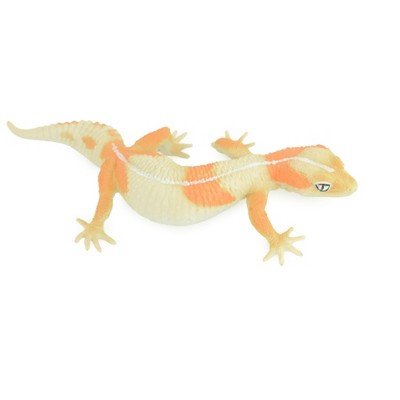Sponsored




Collectible Wildlife Gifts | Tylosaurus, Predatory marine reptile, Museum Quality, Hand Painted, Rubber Mosasaur, Toy, Gift, 3 1/2" CH580 BB163
New at target
$12.29
In Stock
Eligible for registries and wish lists
Sponsored
About this item
Highlights
- Great Gift!.
- Perfect for All Ages
- Realistic Wildlife Toy
Description
This Tylosaurus, 3 1/2" figure includes hand painted features to give it realistic details that are true to natural anatomy. This figure is considered a museum quality replica. Highest Quality Natural Rubber. Tylosaurus (name meaning "Knob Lizard") is a genus of large mosasaur that originated during the Late Cretaceous period in what is now North America. The apex predator of the Cretaceous seas, measuring 18 meters long, and weighing 17 tons, this marine reptilian monster of the deep was the largest mosasaur of all time, having nothing to fear but others of its own kind when fully grown. 65 million years ago. Tylosaurus lived during the Late Cretaceous period, around 87 “ 65 million years ago. While Tyrannosaurus ruled over the land, Tylosaurus was at the top of the food chain in the Cretaceous seas. Tylosaurus died out alongside the dinosaurs during the K/T extinction. Though not a dinosaur, Tylosaurus lived at the same time and region as them and went extinct at around the same time at the end of the Cretaceous period. Since their first discovery in 1868, many Tylosaurus remains have been found in several different countries in North America. Additionally, they have also become one of the most famous prehistoric creatures in the world. The dominant marine carnivore of the Late Cretaceous seas, Tylosaurus was a giant predator that grew to reach more than 45 “ 60 feet (13 “ 18 m) in length and weighing 15 “ 20 tons (33,000 “ 44,000 lbs.), making it the largest of the mosasaur family of marine reptiles and one of the largest carnivorous animals the world had ever seen. Their serpentine shape was no accident, as they were close relatives of snakes. However, they were far more ferocious and even much larger. Smaller species lived in shallow waters close to shore. However, offshore in the deep oceans lurked true giants. Like all mosasaurs, a long and muscular, vertically flattened tail powered Tylosaurus through the water, allowing it to ambush its prey with rapid bursts of acceleration. Paddle-like limbs helped steer the slim body covered in lizard-like scales through the water. Preserved stomach contents indicate a diet heavy on fish, but seabirds, sharks, plesiosaurs, and other mosasaurs also failed to escape Tylosaurus' lethal grip. These sea monsters were feeding on fish (Xiphactinus and sharks), sea birds (Hesperornis), and other reptiles (Archelon), plesiosaurs and other - smaller - species of mosasaurs, as well as other prey items. Its immense head size meant that it could have swallowed medium-sized animals like Squalicorax whole. Tylosaurus was the deadliest hunter of the ancient seas, ready to seize and kill just about any creature that crossed its path with true jaws of death ”lined on each side with two rows of pointy, cone-shaped teeth. Tylosaurus used its snout to locate prey, which, once inside the mosasaur's menacing jaws, was swallowed whole or torn to pieces. When the sea monster opened wide for the final gulp, two extra rows of teeth on the roof of its mouth allowed crippled captives no escape. Tylosaurus was the third new genus of mosasaur to be described from North America behind Clidastes and Platecarpus and the first in Kansas. The early history of the genus as a taxon was subject to complications spurred by the infamous rivalry between American paleontologists Edward Drinker Cope and Othniel Charles Marsh during the Bone Wars. The type specimen was described by Cope in 1869 based on a fragmentary skull measuring nearly 5 feet (1.5 m) in length and thirteen vertebrae lent to him by Louis Agassiz of the Harvard Museum of Comparative Zoology. The fossil, which remains in the same museum under the catalog number MCZ 4374, was recovered from a deposit of the Niobrara Formation located in the vicinity of Monument Rocks near the Union Pacific Railroad at Fort Hays, Kansas. Cope's first publication of the fossil was very brief and was named Macrosaurus proriger, the genus being a preexisting European mosasaur taxon. The specific epithet proriger means "prow-bearing", which is in reference to the specimen's unique prow-like elongated rostrum and is derived from the Latin word prÅra (prow) and suffix -gero (I bear). In 1870, Cope published a more thorough description of MCZ 4374. Without explanation, he moved the species into another European genus Liodon and declared his original Macrosaurus proriger a synonym. Thanks for visiting Collectible Wildlife Gifts, the leading provider of high-quality, lifelike animal Designs and gifts! We work hard to ensure we have a diverse range of products. Each product is inspected for their quality craftsmanship. Whether you're searching for a great gift or seeking educational designs for displays, we ™ve got you covered. At Collectible Wildlife Gifts, our products appeal to a wide range of customers, including family, friends, and educators. Our products are trusted and used by professional organizations as well including aquariums, zoos, and movie studios. Our extensive line of products boasts everything from plush sharks to educational animal growth cycles. Our products bring joy to recipients, and serve as valuable educational resources, sparking curiosity and fostering learning. Discover the wonders of the natural world with Collectible Wildlife Gifts. Browse our collection today!
Number of Pieces: 1
Dimensions (Overall): 1 inches (H) x 3.5 inches (W) x 1.5 inches (D)
Weight: 1 pounds
Suggested Age: All Ages
Material: Rubber
Battery: No Battery Used
TCIN: 1006907295
UPC: 638932590681
Origin: imported
The above item details were provided by the Target Plus™ Partner. Target does not represent or warrant that this information is accurate or complete. On occasion, manufacturers may modify their items and update their labels.
We recommend that you do not rely solely on the information presented. If you have a specific question about this item, you may consult the item's label, contact the manufacturer directly or call Target Guest Services at 1-800-591-3869.
If the item details aren’t accurate or complete, we want to know about it.
Shipping details
Estimated ship dimensions: 3.5 inches length x 5.5 inches width x 3 inches height
Estimated ship weight: 1.1 pounds
This item cannot be shipped to the following locations: American Samoa (see also separate entry under AS), Guam (see also separate entry under GU), Northern Mariana Islands, Puerto Rico (see also separate entry under PR), United States Minor Outlying Islands, Virgin Islands, U.S., APO/FPO, Alaska, Hawaii
item ships from third party seller: Collectible Wildlife Gifts
Return details
This item can be returned to any Target store or Target.com.
This item must be returned within 30 days of the date it was purchased in store, shipped, delivered by a Shipt shopper, or made ready for pickup.
See the return policy for complete information.

